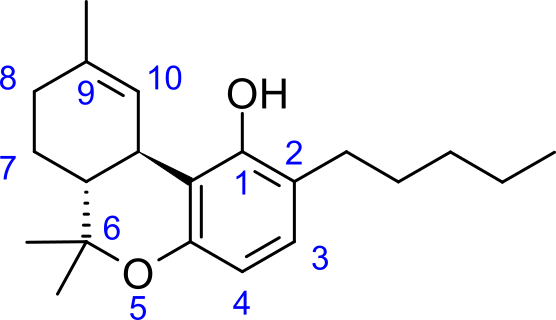Steroid nomenclature
The Δ notation was obviously in use in some fields of the chemistry of natural compounds and/or by some publishers, but probably never recommended by IUPAC. A mention in older specialized IUPAC rules is e.g. in IUPAC-IUB revised tentative rules for nomenclature of steroids (1969):
Rule 2S-4 (extended version of Rule S-4)
…
I. Unsaturation is indicated by changing terminal
‘-ane’ to ‘ene’, ‘-adiene’, ‘-yne’ etc., or ‘-an’ to
‘-en’, ‘-adien’, ‘-yn’ etc.; e.g. 5β-cholest-6-ene,
5β-cholesta-7,9(11)-diene, 5-spirosten; see also the
names of examples (22)-(25). [For uniformity with
the IUPAC Rules cited above, the conventions of
Chemical Abstracts are used also in the present
Rules for the position of locants (positional
numerals) and designation of unsaturation. In
such matters, and in use of Δ (Greek capital delta)
to designate unsaturation (which is not recommended
by IUPAC), authors should respect the
house customs of the journals to which their papers
are submitted.]
Later it became just a footnote in (currently obsolete) IUPAC Definitive rules for nomenclature of steroids (1971/1972) (p. 303).
Pretty recent IUPAC Nomenclature of steroids (Recommendations 1989) states:
3S-2.5. Unsaturation
…
3) The use of Δ (Greek capital delta) is not recommended to designate
unsaturation in individual names. It may be used, however, in generic terms, like 'Δ5-steroids'.
General natural product nomenclature
However, presently, the most widely known use of this delta notation is not in steroids, but in cannabinoids (to specify positional isomers of unsaturated compounds):

Δ9-tetrahydrocannabinol (Δ9-THC, THC)

Δ8-THC
(Please note that there are at least two different numberings for cannabinoids, so you might meet, especially in older literature, names like Δ1-THC and Δ1(6)-THC instead of Δ9-THC, resp. Δ8-THC, but this is a different issue.)
Recent organic chemistry nomenclature
In the recent Nomenclature of Organic chemistry by IUPAC, Recommendations and preferred names (2013), besides the non-preferred notation for double bond junctions already mentioned in another answer, the delta notation is allowed even for the preferred names (PINs):
P-25.7.1.2 Localized double bonds
If it is necessary to identify isomers that differ only by virtue of the location of localized double bonds, this differentiation is indicated by the use of the Greek letter Δ. The locant cited corresponds to the first cited locant of the localized double bond.
Examples:

1,6-dimethyl-Δ1-heptalene (PIN)

1,6-dimethyl-Δ1(10a)-heptalene (PIN)
(Howewer these won't occur very often, the structure in the examples above looks like conjugated system, but it's non-aromatic).
Comma usage
Also note that the coma was/is being used for multiple double bond position specification, as seen in excerpt from Fieser: Natural Products Related To Phenanthrene (1949)
Examples. Δ7,14-Cholestadiene (…), Δ7,9(11)-cholestadiene (…), Δ8(14)-cholestenol-3β
(But note that this comma usage somewhat collides with ring assemblies notation mentioned in another answer.)
In your example, the comma usage is rather incorrect, should be Δ35(36) (so called compound locant, see e.g. A: Numbering bonds in cyclic compounds), instead of Δ35,36. And here the locants differ by 1, so Δ35 should be sufficient.
 Scheme from Nicolau Rapamycin synthesis. Taken from Classics in Total Synthesis I
Scheme from Nicolau Rapamycin synthesis. Taken from Classics in Total Synthesis I




